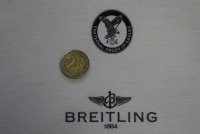
So far emblems, logos or letterings were transferred onto flex foils using vector templates and were subsequently prepared with the help of plotters (foil cutters). The selected patterns were cut out by means of the plotter and the next step was the stripping the matrix because, given this procedure, surplus foil parts can only be removed manually by using a needle. “When it comes to small, very detailed emblems it is impossible to cleanly work out the contours”, says Michael Ebel, sales manager of Franz Hagemann GmbH & Co. KG. “However, that poses no problem if you work with cameo-laser by Hagemann and use the material Laserflex sold by IVM Sign Tex GmbH.”

“You use the raster scan and negatively laser it. Thus all parts you do not want – even where the most delicate motives are involved – are quickly removed. And matrix stripping is no longer necessary” explains Ebel. But there is yet another advantage of the lettering process: Patterns and letterings that are to be applied to a textile material can now also be processed as bitmaps – without having to vectorize the raster graphics in a first step. “Of course, this is a substantial time and therefore also an expense factor.”
Features
Laserflex, which was specially developed for usage with a laser, has a paper liner on its reverse side and can easily be pressed onto a wide range of textiles. “The material is extremely long-lasting, has very good covering power properties, even on dark colours, and makes for perfect contour sharpness”, says Thomas Klasing, CEO of IVM, the partner company of cameo laser when it comes to textile printing systems and materials. In addition laser flex prints are washable at up to 60 degrees and can be ironed at a low temperature.









